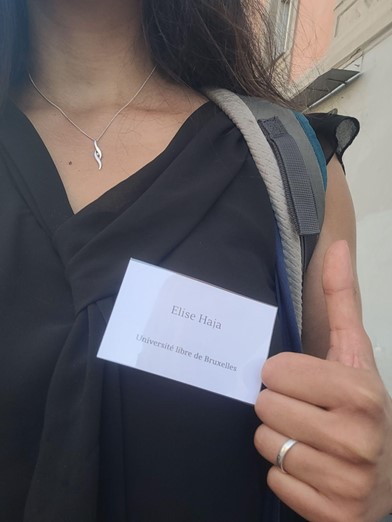From June 22 to 25, the University of Oslo hosted the tenth congress of the European Society for Translation Studies. One of our team members was given the unique opportunity to take part in this event and even presented some findings from her doctoral research. On the agenda: fascinating presentations, fruitful exchanges with peers and cultural events that would pique our colleague Elise’s curiosity for a week. Afterwards, she returned from the High North with new insights and a fresh perspective on research and development, which she happily shares with her colleagues. Want to know more? Keep on reading!
Hanne Skaaden, vice-dean of OsloMET, opened the conference on Wednesday. After welcoming the participants, she began her presentation on interpretive methods for processing information in institutional encounters. On Thursday, Michael Cronin, an eminent translation scholar and professor of French at Trinity College Dublin, shared his knowledge of translations in their ecological context. This presentation made a big impression on Elise, who regularly reflects on man’s place in the world and the role of social exchange and international communication in the Anthropocene, an era characterised by rapid globalisation.
As is the case for any self-respecting profession, it is important for translators to keep up with the latest scientific developments in the field, which is why Elise took the opportunity to attend a large number of presentations, each one more fascinating and multifaceted than the last. Naturally, she immersed herself in the subjects related to her own field of research, but she was also captivated by other topics within the world of terminology research, translation and interpretation studies.
She had, for example, the opportunity and the privilege to discover the extremely delicate field of lyrical translation. How are the poetry and wordplay of Bob Dylan conveyed in French, or the extraordinary beauty of Schubert’s Ave Maria in Turkish? Can you still categorise it as a translation, or is it an original work? It is a debate that has always intrigued polyglots, and one that reminded Elise of the field in which she specialises, namely transcreation.
Many presentations discussed new translation technologies, and thus debated on the future of the profession and everything related to it. This new information allowed Elise to better situate the progress of her field of interest in translation science and the professional landscape, and helped her consider these developments from a practical point of view. Is machine translation still translation? And is post-editing a realistic option for crisis translation? What will subtitling look like in a society that is becoming increasingly accessible and inclusive? How does the reviser position himself in highly specialised translations, for example in the financial sector? These are just some of the fascinating topics that Elise had the opportunity to question the specialists on.
On Friday evening, after everyone’s intellectual thirst was quenched, the participants were invited to dinner. The atmosphere was exuberant and the smell of fresh salmon mouthwatering (thank you, Norway!). Accompanied by the background murmuring of countless language lovers, Elisabet Tiselius, president of the society, took the floor to thank everyone for their presence and to express her love for the most beautiful profession in the world.
“We are the bridges between cultures,” she declared with great enthusiasm, “and it is our duty to ensure that those bridges are as strong as possible.” When, that same evening, a terrorist act was committed in the centre of Oslo, this statement became painfully relevant. During Pride month (the activities were cancelled the next day), the affirmation and appreciation of one’s own sexual, gender of cultural identity is no longer suppressed, but proudly expressed. This expression, this concert of voices and texts, makes intercultural communication all the more important. The bridges connecting our separate shores must be stronger than ever, to discourage forever those who would burn them.




